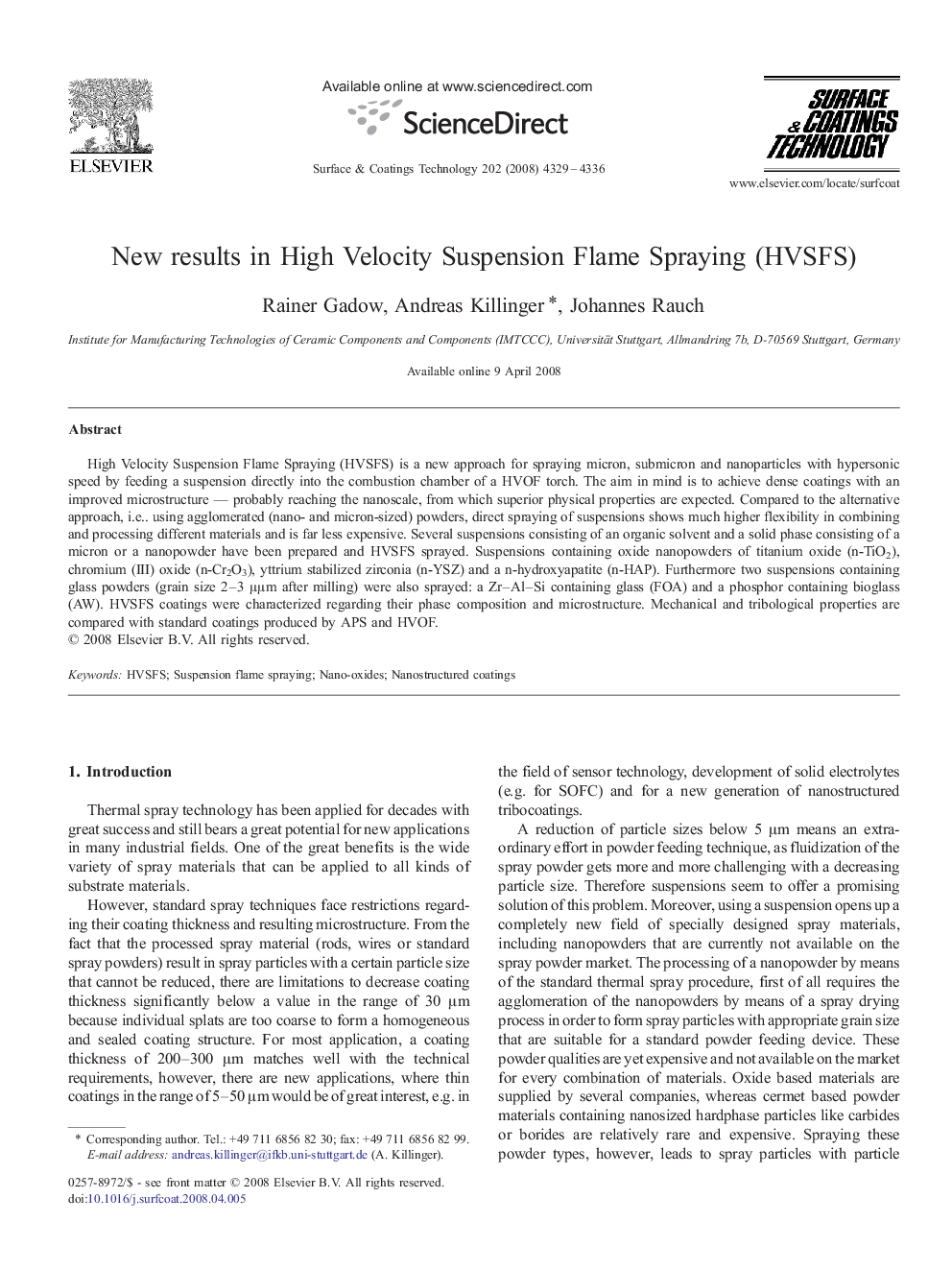| Article ID | Journal | Published Year | Pages | File Type |
|---|---|---|---|---|
| 1660899 | Surface and Coatings Technology | 2008 | 8 Pages |
High Velocity Suspension Flame Spraying (HVSFS) is a new approach for spraying micron, submicron and nanoparticles with hypersonic speed by feeding a suspension directly into the combustion chamber of a HVOF torch. The aim in mind is to achieve dense coatings with an improved microstructure — probably reaching the nanoscale, from which superior physical properties are expected. Compared to the alternative approach, i.e.. using agglomerated (nano- and micron-sized) powders, direct spraying of suspensions shows much higher flexibility in combining and processing different materials and is far less expensive. Several suspensions consisting of an organic solvent and a solid phase consisting of a micron or a nanopowder have been prepared and HVSFS sprayed. Suspensions containing oxide nanopowders of titanium oxide (n-TiO2), chromium (III) oxide (n-Cr2O3), yttrium stabilized zirconia (n-YSZ) and a n-hydroxyapatite (n-HAP). Furthermore two suspensions containing glass powders (grain size 2–3 μμm after milling) were also sprayed: a Zr–Al–Si containing glass (FOA) and a phosphor containing bioglass (AW). HVSFS coatings were characterized regarding their phase composition and microstructure. Mechanical and tribological properties are compared with standard coatings produced by APS and HVOF.
